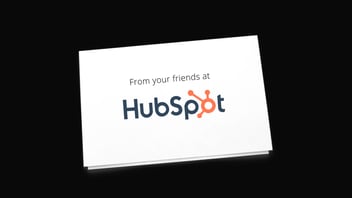How to Create Engaging Content for Your Business
As a business owner, you know that content is key to attracting and keeping customers. But what kind of content should you create, and how can you make sure it's engaging?
In this article, we'll discuss how to create engaging content for your business. We'll cover topics like understanding your audience, crafting a compelling message, and using different types of content to keep your audience engaged.
So whether you're just getting started with content marketing, or you're looking for ways to take your content to the next level, this article is for you. Let's get started!
Keep It Simple
When it comes to creating content for your business, it's important to keep things simple. Your audience doesn't want to be bombarded with a lot of information all at once - they'll quickly become overwhelmed and tune out. Instead, focus on delivering one key message per piece of content. Keep your language clear and concise, and avoid using industry jargon or buzzwords that your audience might not understand.
Breaking down complex topics into manageable chunks is also crucial when keeping things simple. No one wants to read an essay-length blog post! So break up your text with subheadings, bullet points, and images to make scanning through easier on the eyes. And finally, always proofread your work before hitting publish - nothing will turn off readers faster than seeing typos and grammatical errors throughout your article
Know Your Audience
As an entrepreneur, it's important to know your audience when creating content. After all, you want your content to be engaging and resonate with the people you're trying to reach. The first step is understanding who your target market is and what they're interested in. Once you have a good handle on that, you can start creating content that speaks directly to them.
Here are a few tips for creating engaging content for your business:
1) Keep it personal - Write as you would speak to a friend or colleague. This will help make your message more relatable and down-to-earth.
2) Be authentic - People can spot inauthenticity from a mile away, so don't try to be someone you're not. Just be yourself!
3) Know what's trending - Pay attention to popular topics within your industry so you can create timely, relevant content that resonates with current trends
Write As You Talk
When it comes to writing, a lot of people tend to overthink things. They want their writing to sound formal and professional, so they end up making it stiff and stilted. But the truth is, your readers will engage with your content more if you write as you talk. Use natural language instead of trying to sound overly complicated or technical. Be friendly and casual instead of cold and distant. Your readers will appreciate the approachability!
Of course, that doesn’t mean you should start using slang or being unprofessional – just don’t be afraid to let your voice shine through in your writing. Write like yourself – everyone else is taken!
Use Strong Headlines
The headline is one of the most important elements of your content. It's what entices people to click and read more. A strong headline will make or break your article, blog post, or web page.
Here are some tips for writing strong headlines:
1) Keep it short and sweet- People have short attention spans these days, so keep your headlines under 60 characters. Get to the point quickly with a catchy phrase that sums up what you're offering.
2) Use active language- Write in the present tense and use action verbs to grab attention. For example, "How to Create Engaging Content for Your Business" is better than "Content Creation Tips for Entrepreneurs."
3) Be specific- Don't generalize or be vague in your headlines; give readers an idea of exactly what they can expect by clicking through to your article. For instance, if you're sharing tips on social media marketing, let them know which platforms you'll be discussing such as Facebook, Twitter, etc
Be Concise
When it comes to writing, conciseness is key. This means that you should aim to be clear and concise in your language, and avoid unnecessary words or phrases. A good rule of thumb is to use as few words as possible while still conveying your meaning effectively.
Concise writing can be tricky, but there are a few things you can do to help yourself. First, take the time to plan out what you want to say before you start writing. This will give you a better sense of direction and make it easier for you to edit later on. Second, try reading your work aloud – this will help you catch any awkward phrasing or long-winded sentences. Finally, don’t be afraid of making cuts – even if something feels important, if it doesn’t add anything essential then it can probably go!
Conclusion
If you want to create engaging content for your business, there are a few things you should keep in mind. First, keep it simple. Your audience doesn't want to be bombarded with too much information at once. Second, know your audience. What are their pain points? What kind of content are they looking for? Write accordingly. Third, write as you talk. Use a conversational tone so that your readers feel like they're having a conversation with you, not being lectured to. Fourth, use strong headlines. Headlines are what will grab your reader's attention, so make them count. Fifth, be concise. No one wants to read a wall of text. Get to the point and provide value.
If you follow these tips, you'll be on your way to creating engaging content that your audience will love. So what are you waiting for? Get writing!
Article by Richard Walsh
As a certified inbound and content marketer, Richard believes in the need to create high-quality compelling content, that drives engagement and interaction. Richard has been developing brands and high-quality web experiences since 2001. Book a meeting with Richard to talk about your branding and marketing efforts.




